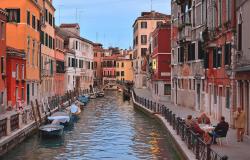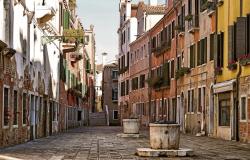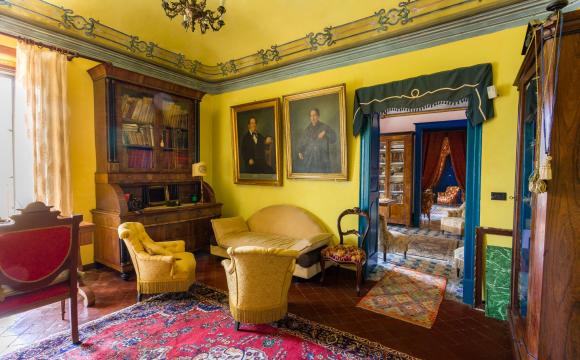Venice Mayor Massimo Cacciari on Tuesday dismissed fears that the city's new hi-tech bridge might be shaky.
''It's absolutely bomb-proof, totally safe,'' Cacciari said in response to reports that engineers were worried by recent tests.
''It's only budged about 14 millimetres since it was put in place. Since the last load-bearing tests were done there has been no further movement,'' the mayor said.
Cacciari said the bridge's safety had been ''certified by countless top professionals and third-party experts'' since the engineering doubts emerged two weeks ago.
''We'll keep on monitoring it as we're supposed to, of course, but there's not been one sign of instability''.
The mayor urged journalists to ''stick to the facts'' and not ''add to a media feeding frenzy''.
The fears were raised by a January 18 article in a local paper which claimed engineers were worried about a slight movement in the acclaimed but controversial structure designed by Spanish architect Santiago Calatrava.
It quoted project chief Roberto Casarin as saying the bridge moved ''about a centimetre'' in a load-bearing trial.
''Since it has a lifetime maximum shift tolerance of 4cm, I guess it'll have to be closely watched for the whole of its life span,'' Casarin added.
The movement glitch was the latest hurdle to hit the bridge, which was installed two years late last summer following last-minute fears that the canal banks wouldn't be able to hold it up properly.
The flagship project has yet to be officially unveiled.
Once opened, the bridge will link Venice's railway station with Piazzale Roma, a car and bus terminal on the opposite side of the Grand Canal.
A sleek arc of steel accessed by a flight of glass steps, it spans 94 metres from one bank to the other.
The bridge will be the fourth over the lagoon city's Grand Canal and the city's first new bridge in 70 years.
The project has been dogged by controversy and delays, with problems ranging from spiralling costs and alarm over the bridge's weight to protests over lack of access for the disabled.
An original price tag of four million euros has swelled to 11 million euros, while the decision to add an automatic elevator for wheelchairs has bumped the cost up a further 1.44 million euros.
Alterations to the original design have helped up the price and delayed the planned inauguration date of June 2005.
These include the decision to add stairs, in order to make the structure more visible to tourists, and to use two kinds of stone instead of one.
Opponents of the bridge have said the money would have been better spent on the renovation of municipal buildings to help poorer families and encourage them to remain in the tourist-besieged city.
Calatrava, who also designed the 2004 Athens Olympic stadium, recently issued an angry statement rejecting the fears that the banks of the Grand Canal might not be able to bear the bridge's weight.
He said the weight of the bridge would be borne by foundations set far below the banks in a resilient layer of stone and earth compacted and hardened by hydraulic cylinders.
The architect, whose other trademark buildings include an auditorium and sealife centre in his native Valencia and the Milwaukee Museum of Fine Arts, also stressed that the project delays and rising costs had nothing to do with him.














